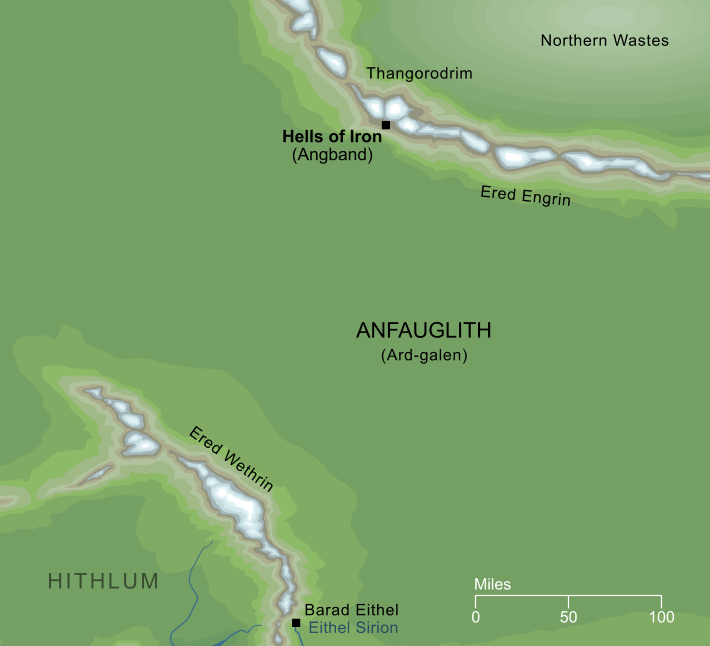
The Hells of Iron (partially conjectural)
The Hells of Iron (partially conjectural)
A name, and essentially a poetic translation, of Angband, the stronghold of Morgoth in the North of the world. It was originally an outpost of his great underground dwelling at Utumno, which was ruined at the time of his capture in the Battle of the Powers. When Morgoth returned to Middle-earth after the Darkening of Valinor, he ruled from the dark depths of Angband. During the time after the first rising of the Sun and Moon, and especially after the Dagor Bragollach, he took many of the Noldor and Sindar captive and enslaved them, thus giving rise (at least in the later conception of The Silmarillion) to the name Angband, literally meaning 'iron prison', but from which the name 'Hells of Iron' is derived.
In earlier conceptions of The Silmarillion tales, the name 'Hells of Iron' had a much more literal meaning. In that formulation of the stories, Melkor actually had the power to draw the spirits of the dead to him, and those who were not granted a place in the Halls of Mandos would be borne '...to Angamandi,1 the Hells of Iron, where they have evil days.'2 In later versions of Tolkien's cosmology, this idea of Melkor as a literal lord of Hell was soon abandoned, so that all spirits would eventually find their way to Mandos, but nonetheless the resonant title 'Hells of Iron' survived into the published work.
Notes
1 |
Angamandi is the original (Quenya) form of the name more familiar as Sindarin Angband.
|
2 |
The History of Middle-earth volume I, The Book of Lost Tales I, III The Coming of the Valar and the Building of Valinor. |
Indexes:
About this entry:
- Updated 7 October 2011
- This entry is complete
For acknowledgements and references, see the Disclaimer & Bibliography page.
Original content © copyright Mark Fisher 1998, 2001, 2010-2011. All rights reserved. For conditions of reuse, see the Site FAQ.
Website services kindly sponsored by Axiom Discovery aptitude and skill testing.
Axiom Discovery gives you comprehensive online aptitude testing covering core skills across a wide range of disciplines.

